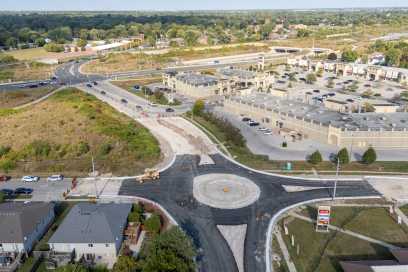New Details Released About Grace Hospital Urgent Care Centre
Thursday July 23rd, 2015, 12:51pm
Hello time traveller!!
This article is 3707 days old.
The information listed below is likely outdated and has been preserved for archival purposes.
New details are emerging about a proposed urgent care centre for the former Grace hospital site.
Windsor Regional Hospital officials say it’s a plan to reduce wait times, by keeping people out of the Emergency Department.
Last year 131,000 people visited the Windsor Regional Hospital Emergency Department at either the Metropolitan or the Ouellette Campus and officials say about 40% of those visitors could likely have received more timely care at an Urgent Care Centre.
Last week Windsor Regional Hospital introduced plans to open the region’s first comprehensive Urgent Care Centre, as part of the proposed Windsor-Essex Hospitals System. Under the proposal, Windsor Regional Hospital would open an Urgent Care Centre at 339 Crawford Avenue, the site of the former Grace Hospital – a capital investment of more than $130 million.
The Centre would complement emergency services at the proposed New Single-Site Acute Care Hospital location and treat about 30,000 patients a year.
“These are patients with who need to see a doctor, but don’t really need emergency room care,” says David Musyj, Windsor Regional Hospital President and CEO.
Urgent Care Centres provide treatment to patients with non-life threatening conditions – no appointment necessary. Unlike a walk-in-clinic, true urgent care centres have a full set of diagnostics (including a CT scanner) and are staffed by hospital emergency staff and physicians.
“It is like a walk-in clinic on steroids,” says Musyj. “It will give our patients with less severe conditions an alternative, central location for treatment.”
Right now, when patients come into either of the two Windsor Regional Hospital Emergency Departments, they are prioritized using the Canadian Triage and Acuity Scale (CTAS). This 5-point scale is used to evaluate a patient’s acuity level and help define the patient’s needs.
Canadian Triage and Acuity Scale:
CTAS 1 requires resuscitation. It includes conditions that are threats to life or imminent risk of deterioration, requiring immediate aggressive interventions (e.g., cardiac arrest, major trauma or shock states).
CTAS 2 requires emergent care. It includes conditions that are a potential threat to life or limb function requiring rapid medical intervention or delegated acts (e.g., head injury, chest pain, gastrointestinal bleeding, abdominal pain with visceral symptoms, or neonates with hyperbilirubinemia).
CTAS 3 requires urgent care. It includes conditions that could potentially progress to a serious problem requiring emergency intervention (e.g., mild moderate asthma or dyspnea, moderate trauma, or vomiting and diarrhea in patients younger than 2 years).
CTAS 4 requires less urgent care. It includes conditions related to patient age, distress, or potential for deterioration or complications that would benefit from intervention or reassurance within 1 to 2 hours (e.g., urinary symptoms, mild abdominal pain, or earache).
CTAS 5 requires non-urgent care. It includes conditions in which investigations or interventions could be delayed or referred to other areas of the hospital or health care system (e.g., a sore throat, menses, conditions related to chronic problems, or psychiatric complaints with no suicidal ideation or attempts).
Typically patients with a CTAS scores between 3-5 end up sitting in hospital wait rooms, while emergency staff deal with higher priority patients. Urgent Care Centres are designed specifically for those with a CTAS score of 3-5.
“This model removes some of the less critical patients from the Emergency Department and places them in a more appropriate setting,” says Dr. Paul Bradford, Medical Director of Emergency and Trauma Services at Windsor Regional Hospital. “It not only makes more sense for patients, it also takes the burden off of the department where patients need to be admitted.”
“The Urgent Care Centre will have an ultrasound and a CT scanner so it is much more than a walk-in-clinic,” says Bradford, “It is a place where real medical decisions can be made.”
The Urgent Care Centre is part of a plan that has been submitted to the Ministry of Health and Long-Term Care. The Ministry is now in the process of reviewing and evaluating the plan. Approval from the Ministry is required before proceeding with these plans.
























